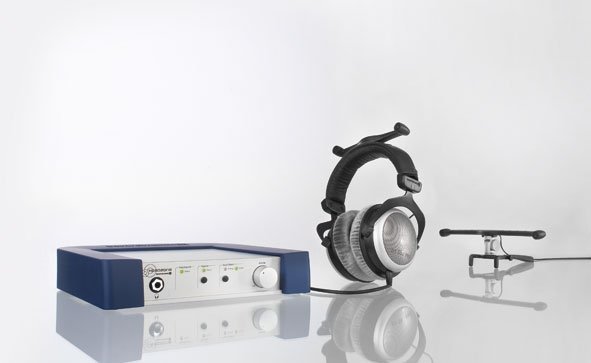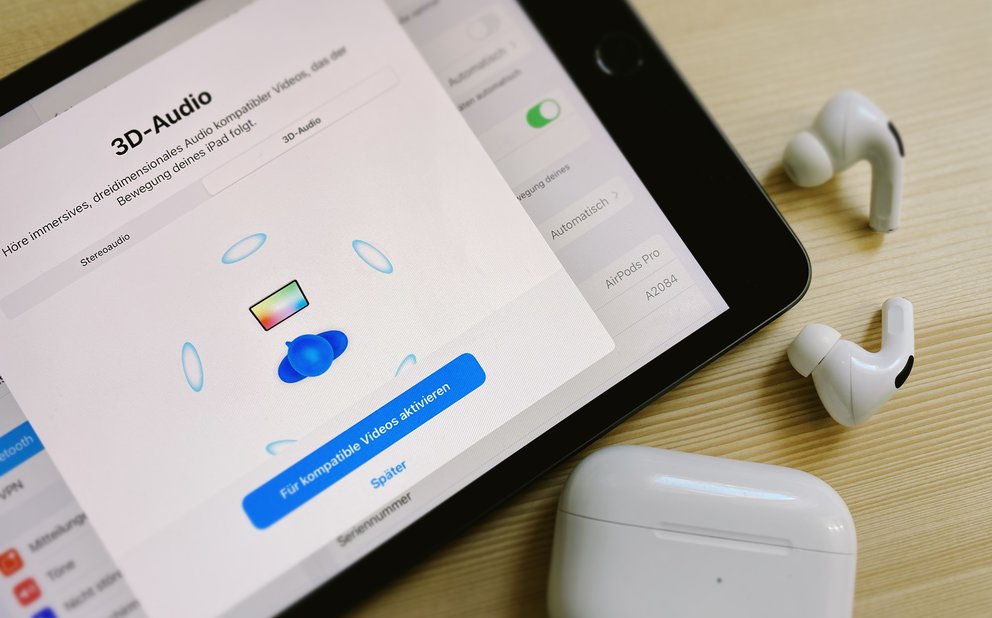Use spatial audio (3D audio) with AirPods: instructions, apps and content
With iOS 14, the AirPods Pro and AirPods Max also get a fascinating function: “Spatial audio with dynamic tracking of head movements” – a kind of surround sound / 3D effect, straight from the headphones. GIGA lists the requirements for spatial audio and which streaming offers and apps already support the feature.
Announced as “Spatial Audio” when iOS 14 was presented, the function is now under the names in German “Spatial Audio” (Apple press release) or “3D audio” (Bluetooth settings, iOS 14). Both terms are accurate – when 3D audio is activated, you can actually experience a surround effect with headphones that is close to a real home theater system in terms of spatiality. However, a number of conditions must be met for the 3D sound to work as Apple is promoting it.
Contents
Where can I use spatial audio (3D audio) with the AirPods Pro and AirPods Max?
Streaming services and content that support 3D audio:
- Apple TV + (e.g. Greyhound, SEE etc.)
- At iTunes Purchased films with a surround track (e.g. Contagion, Blade Runner, etc.), played via the Apple TV app
- Discovery + (currently not in Germany)
- Disney + (e.g. The Mandalorian etc.)
- HBO Max (currently not in Germany)
- Hulu (currently not in Germany)
- Peacock (currently not in Germany)
- Plex
- Vudu (currently not in Germany)
Some apps that support 3D audio:
A fairly manageable selection that will hopefully be expanded in the future. Other popular services and apps such as Amazon Prime Video, Apple Music, Netflix, Spotify, VLC or YouTube currently support 3D audio Not (As of March 15, 2021). We also noticed that it is sometimes necessary to first switch 3D audio off and then on again in the Bluetooth settings so that it works in conjunction with an app.
Apple Spatial Audio (3D audio): Technical requirements
Operating system:
- At least iOS 14 or iPadOS 14
AirPods Pro firmware:
- “3A283” or newer. Find out how: Connect AirPods Pro with iPhone, look in the Bluetooth settings under the item “Version” (instructions for manual update).
Supported headphones:
- Only the AirPods Pro and AirPods Max from Apple. The models from other manufacturers, the normal AirPods (without Pro) or the wired EarPods are not supported!
Supported iPhones (compatible with 3D audio):
- iPhone 7 and iPhone 7 Plus
- iPhone 8 and iPhone 8 Plus
- iPhone X
- iPhone XS and iPhone XS Max
- iPhone XR
- Phone 11
- iPhone 11 Pro and iPhone 11 Pro Max
- iPhone SE (2020)
- Phone 12
- iPhone 12 Pro and iPhone 12 Pro Max
Supported iPads (compatible with 3D audio):
- iPad Pro 12.9-inch (3rd generation) and newer
- iPad Pro 11-inch
- iPad Air (3rd generation) and newer
- iPad (6th generation) and newer
- iPad mini (5th generation)
Unsupported currently all Macs (Macbook Air, iMac etc.) and the TV streaming boxes Apple TV and Apple TV 4K. It remains to be seen whether and when Apple will upgrade the compatibility here.
Enable Apple 3D audio in iOS 14
The AirPods pro must be connected to the iPhone or iPad. Then you can find the option “3D-Audio” here:
Settings> Bluetooth> AirPods Pro> Info (i in circle)
Already knew? Here are the most important things to know about the AirPods Pro:
What does spatial audio (3D audio) actually bring?
Others lead the way, Apple does it perfectly – this old rule of thumb also applies here. The approach pursued with “Spatial Sound” is not entirely new. The idea has already been implemented (in a different version), for example with the Audeze Mobius (headset with head tracking) or the Beyerdynamic Headzone Pro (5.1 surround headphone monitoring system with head tracking). Apple is now making the well-known principle more easily accessible than ever before – the technical hurdles for the user are hardly present compared to older solutions.

Apple’s 3D audio makes use of the gyroscope and accelerometer in the AirPods Pro and the iPhone / iPad. In this way, the movements of the head and the playback device are recorded spatially. Based on the movement data, the sound field is positioned in such a way that it appears to remain anchored to the device even when the head is moved. The effect is ultimately a virtual imitation of real loudspeakers that are immobile in the living room. If you sit in front of speakers (without headphones) and turn your head slightly to the left during a film dialogue, this dialogue can be heard more strongly in the right ear, as it is spatially closer to the loudspeakers due to the head rotation.

With conventional headphones, on the other hand, nothing would change in the sound impression when they are turned, since they sit on their head and take part in the rotation. This contributes to a phenomenon known as “In the head localization” referred to as. With 3D audio with the AirPods Pro, however, the sound is “rotated” around the user using psychoacoustic methods in such a way that the film dialogue apparently continues to come “from the front” – as if speakers were set up where the iPhone / iPad is. In technical terms, it means the “change in the location of the auditory event when the head is turned” (the location of the auditory event moves with it). Thanks to the fine tuning, the 3D effect in Apple’s “Spatial Sound” occurs even with slight head movements and ensures an extraordinary and spatial experience.




